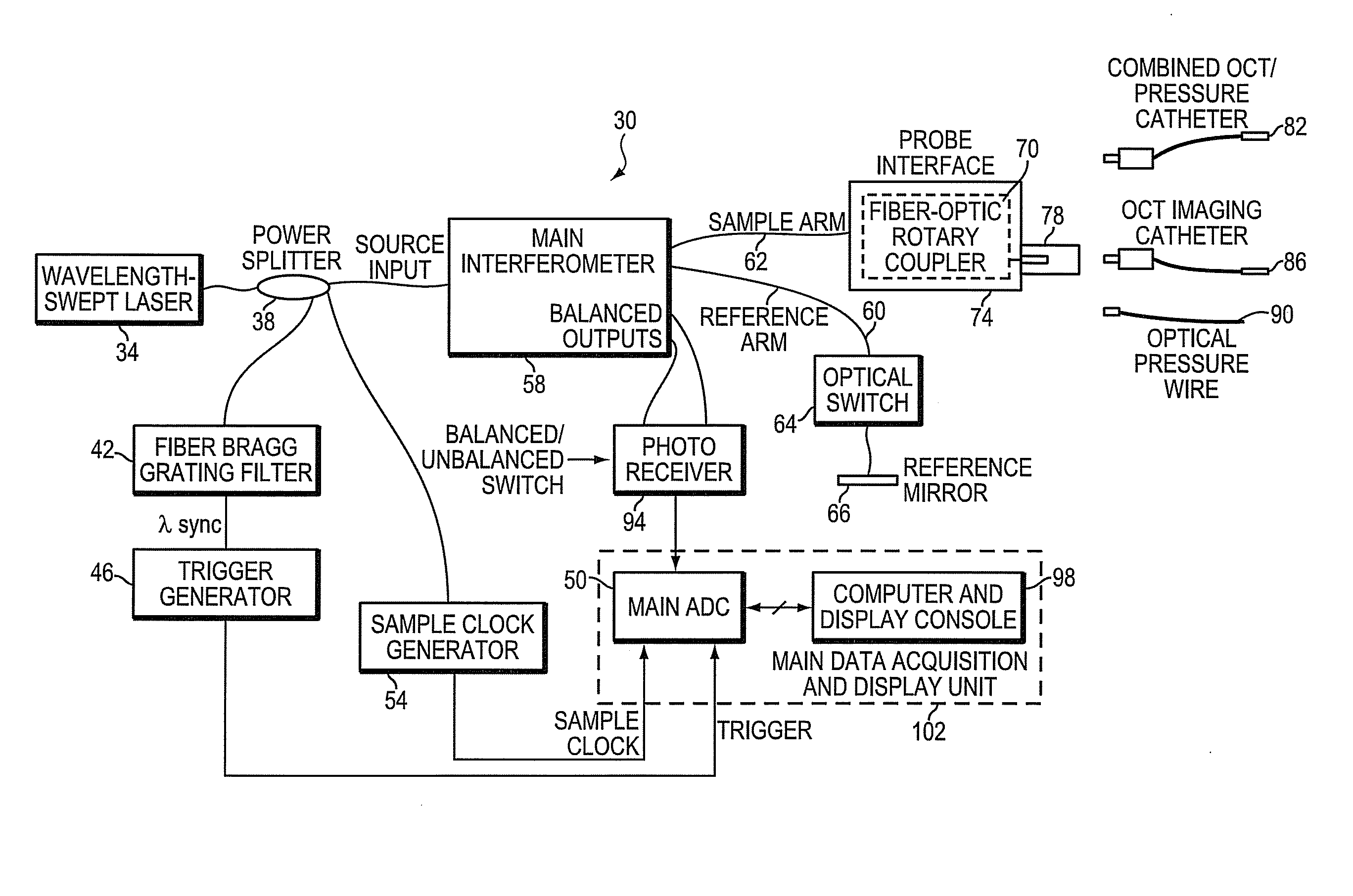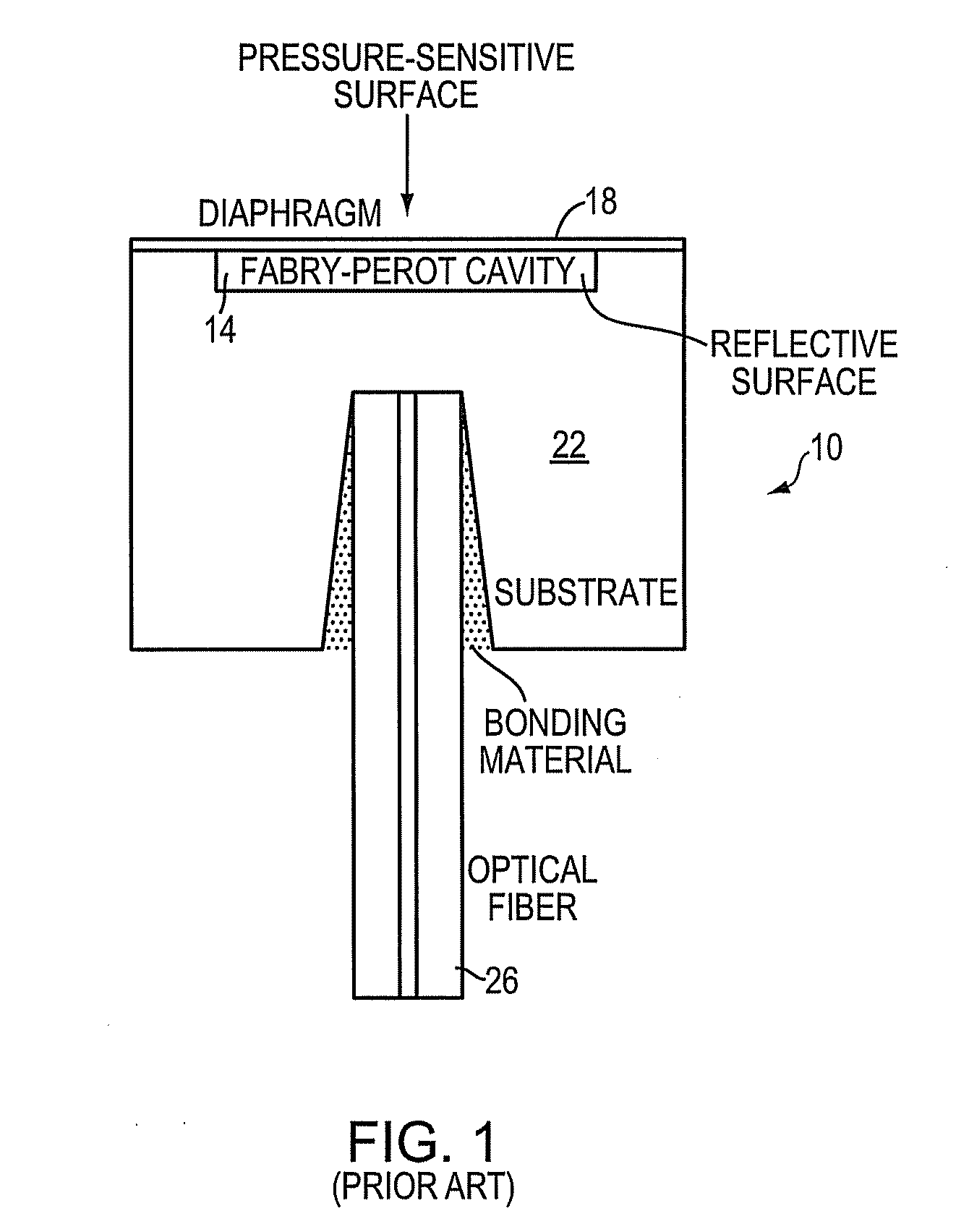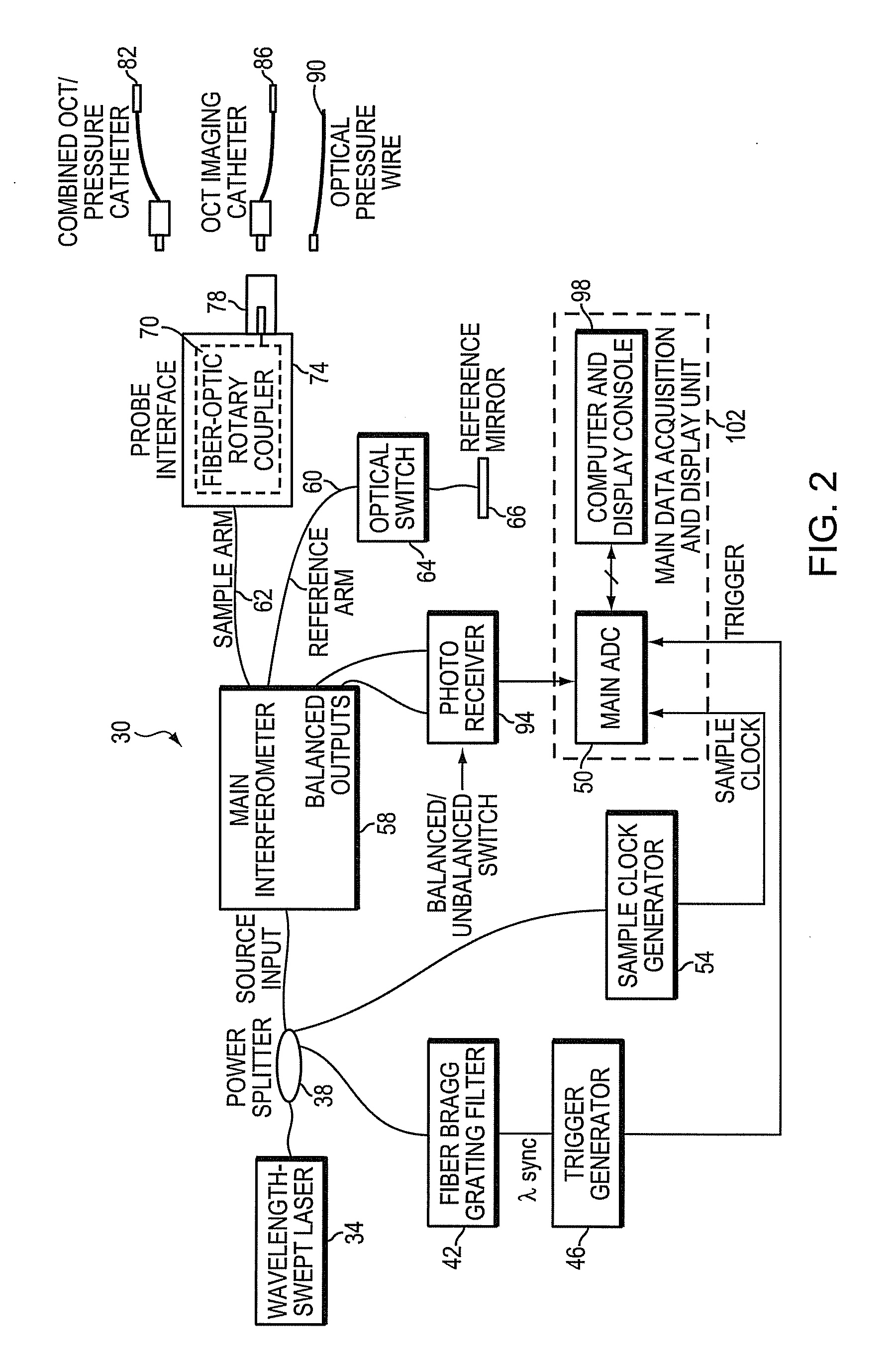Intravascular optical coherence tomography system with pressure monitoring interface and accessories
a technology of optical coherence tomography and optical coherence tomography, which is applied in the field of invasive medical devices, can solve the problems of monitoring systems, their susceptibility to electrical interference and calibration drift, and the relative large minimum diameter of pressure wires, and achieve cost-effective pressure monitoring capabilities
- Summary
- Abstract
- Description
- Claims
- Application Information
AI Technical Summary
Benefits of technology
Problems solved by technology
Method used
Image
Examples
second embodiment
[0056]In the system to automatically determine what type of probe is connected to the system, following insertion of the catheter 86 or pressure probe 90, the system attempts to rotate the motorized fiber-optic rotary coupler 70. A torque sensor in the motor of the motorized coupler 70 measures resistance to rotation. Torque exceeding a specific threshold indicates that a pressure probe 90, with a non-rotating proximal connection, is attached. Once insertion of a pressure probe 90 has been detected, the motor disengages and the appropriate control and display software loads.
third embodiment
[0057]In a third embodiment, an encoded electrical or optical tag (e.g., bar code, wire-encoded electrical connector, RFID tag, flash memory chip) on the proximal end of the OCT imaging catheter 86 or pressure probe 90 (or both 82) is read by the system to identify the appropriate mode of operation. The tag can be read automatically by the probe interface 74 when the probe is inserted or, alternatively, a handheld device can be employed to read the marker from the body or package of the probe. This method of probe identification has the advantage that additional factory calibration data encoded in the markers can be read at the same time.
[0058]In addition to features that enable automatic software configuration, the system of FIG. 2 also contains features that enable automatic hardware configuration once the operational mode has been determined. In the standard OCT imaging mode, optical switch 64 is actuated, allowing light to reflect from the reference mirror 66. However, in the pr...
first embodiment
[0059]FIG. 3 is a block diagram of another embodiment 30′ of the invention in which separate optical connections are provided on the probe interface 74′ for the OCT imaging catheter 86 and optical pressure probe 90. This configuration enables acquisition of blood pressure measurements with a separate pressure probe 90 before, during, or after OCT imaging. Measurement of pressure during OCT imaging can be accomplished by inserting both probes in the blood vessel at the same time. An additional optical channel 112 from the power splitter 38′ directs light to the pressure probe 90 through an optical circulator 116. The optical circulator 116 re-directs the light that returns from the pressure probe 90 into a second photodetector 120 that generates the electronic signal corresponding to interference signals from which the pressure measurements are derived. These signals are digitized by a second channel of the analog to digital converter 50′ and recorded by the same data acquisition sys...
PUM
| Property | Measurement | Unit |
|---|---|---|
| distance | aaaaa | aaaaa |
| lumen diameters | aaaaa | aaaaa |
| diameter | aaaaa | aaaaa |
Abstract
Description
Claims
Application Information
 Login to View More
Login to View More - R&D
- Intellectual Property
- Life Sciences
- Materials
- Tech Scout
- Unparalleled Data Quality
- Higher Quality Content
- 60% Fewer Hallucinations
Browse by: Latest US Patents, China's latest patents, Technical Efficacy Thesaurus, Application Domain, Technology Topic, Popular Technical Reports.
© 2025 PatSnap. All rights reserved.Legal|Privacy policy|Modern Slavery Act Transparency Statement|Sitemap|About US| Contact US: help@patsnap.com



